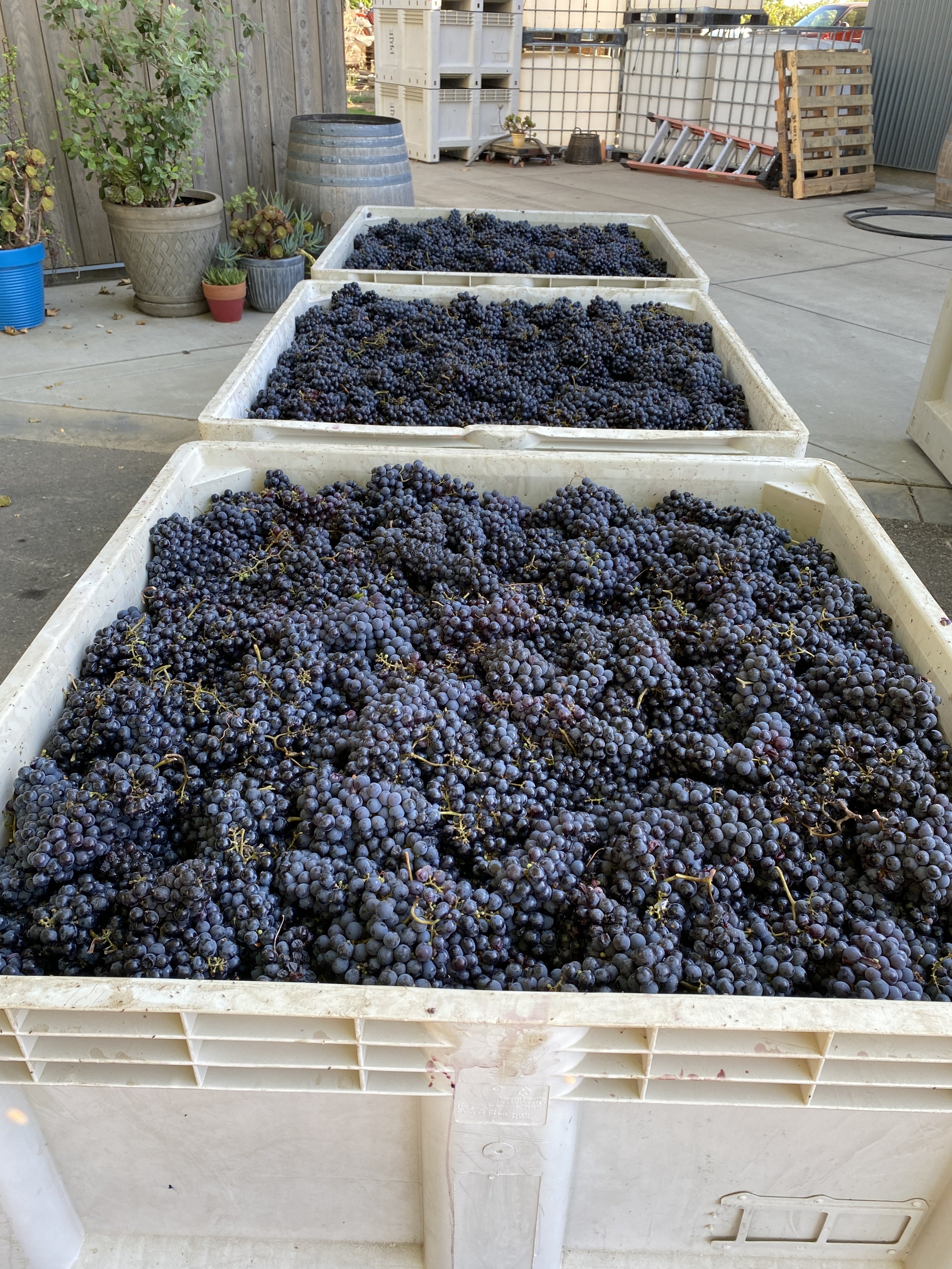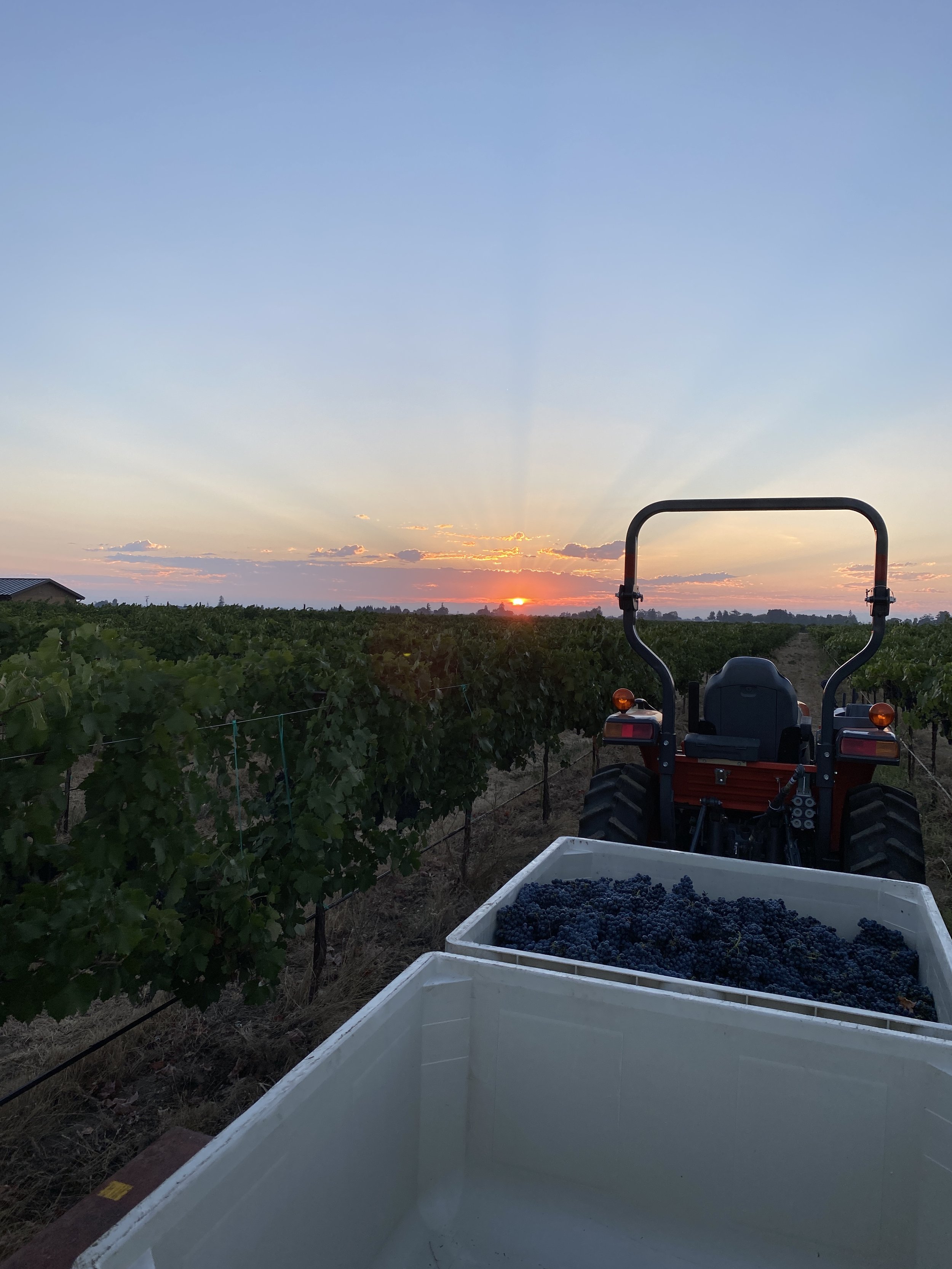 Image 1 of 3
Image 1 of 3

 Image 2 of 3
Image 2 of 3

 Image 3 of 3
Image 3 of 3




Mencía 2023
We certainly never set out to make wines from obscure Spanish grape varieties…in California. But here we are with our second iteration, a Mencía, to follow in the footsteps of our 2022 Prieto Picudo. We love them both, yet they could not be more different. Where the Prieto was dark and brooding, this wine is elegant and floral. Clocking in at just 12.4% alcohol, it’s perfect for summer - for a meal, at the beach, in the mountains, or on the sofa. It’s the kind of wine I like to drink, and I think you will too.
The Grape
Mencía makes an impact when first tasted. Compared with, say, Merlot or Syrah, it has more intensity, more accentuated flavors. It is not shy, with fruits both red and black ready to greet you, followed by dusty earth, licorice, and black coffee. But it is also balanced. While it may be generous with flavors, it rarely makes wines that are plush or fat. It has a perfect medium-bodied energy, much like the Sangiovese in a good Chianti Classico, that keeps you coming back for more.
Native to Castilla y León in northern Spain, it is the principal grape in Bierzo, Ribeira Sacra, and Valdeorras. It is also the same as Jaen, found in Portugal’s Dão district, and while it was once thought to be related to Cabernet Franc, DNA fingerprinting has shown it to be a uniquely Iberian variant.
Historically, Mencía was made into everyday wines that were often thin and astringent. But as producers focus more and more on old vines and careful vinification, the true character of this grape has begun shining through.
The Source
Most of our wines are made with fruit that we farm, namely Syrah and Zinfandel in the Russian River Valley. But in 2022, I wanted to do something different, so I made some Prieto Picudo, a Spanish grape variety grown by John Gash, of Prie Winery, in the Mokelumne River AVA. The Prieto Picudo wine we made in 2022 was (and is) lovely, but when John told me he had some Mencía available in 2023, I couldn’t say no.
John farms all of his vineyards organically, with no tilling, no synthetic herbicides or pesticides, only stuff that's good for the grapes, good for the soil, and good for the people. The vineyard is located along the Mokelumne River, near Lodi, about three hours inland from the coast.
The Winemaking
I crushed and destemmed 2/3 of the fruit, while the rest was stomped by foot, stems intact. After two days of cold soaking, the fermentation took off via native yeast in open-top fermenters. Nothing was added - no yeast, no nutrient, no acid, nada. Twelve days later, the wine was pressed and put into neutral oak barrels, where it sat for 15 months.
After 15 months, it had extraordinary flowers and spice on the nose, but it needed a smidge of body. Fortunately, I still had one ½ barrel of Prieto Picudo that was never bottled, and it gave the Mencía just the right amount of bounce it needed. I let the wines marry together for six months, and into the bottle it went, with a small amount of SO2 to keep it safe.
How's it taste?
Elegant, medium-bodied, with fresh acid and the right hint of tannin. Drink it chilled or room temp, it’ll oblige either way. Red fruits and black, with pomegranate, tea and coffee, and the longest finish that, well, it goes on and on. It really sings.
How to drink and enjoy
These wines will be bottled in early June. We will either ship from California or from our warehouse in New York. We’re still sorting out logistics, but we will be in touch as soon as the wines are ready for shipment. Wines also don't like being shipped, and are usually much better if given a week or so to settle down after they arrive.
Once it’s drinking time, be sure to serve this one around 60 degrees, the cooler temp will help highlight the pretty and elegant notes.
Details
Appellation: Mokelumne River
Vineyard: Prie Vineyard
Grapes: 81% Mencía | 19% Prieto Picudo
Aging: 21 months in neutral French oak
Production: 88 cases
Specs: Alcohol: 12.4% | Titratable Acidity: 5.27 g/L | pH: 3.65 | Volatile Acidity: 0.78 g/L
We certainly never set out to make wines from obscure Spanish grape varieties…in California. But here we are with our second iteration, a Mencía, to follow in the footsteps of our 2022 Prieto Picudo. We love them both, yet they could not be more different. Where the Prieto was dark and brooding, this wine is elegant and floral. Clocking in at just 12.4% alcohol, it’s perfect for summer - for a meal, at the beach, in the mountains, or on the sofa. It’s the kind of wine I like to drink, and I think you will too.
The Grape
Mencía makes an impact when first tasted. Compared with, say, Merlot or Syrah, it has more intensity, more accentuated flavors. It is not shy, with fruits both red and black ready to greet you, followed by dusty earth, licorice, and black coffee. But it is also balanced. While it may be generous with flavors, it rarely makes wines that are plush or fat. It has a perfect medium-bodied energy, much like the Sangiovese in a good Chianti Classico, that keeps you coming back for more.
Native to Castilla y León in northern Spain, it is the principal grape in Bierzo, Ribeira Sacra, and Valdeorras. It is also the same as Jaen, found in Portugal’s Dão district, and while it was once thought to be related to Cabernet Franc, DNA fingerprinting has shown it to be a uniquely Iberian variant.
Historically, Mencía was made into everyday wines that were often thin and astringent. But as producers focus more and more on old vines and careful vinification, the true character of this grape has begun shining through.
The Source
Most of our wines are made with fruit that we farm, namely Syrah and Zinfandel in the Russian River Valley. But in 2022, I wanted to do something different, so I made some Prieto Picudo, a Spanish grape variety grown by John Gash, of Prie Winery, in the Mokelumne River AVA. The Prieto Picudo wine we made in 2022 was (and is) lovely, but when John told me he had some Mencía available in 2023, I couldn’t say no.
John farms all of his vineyards organically, with no tilling, no synthetic herbicides or pesticides, only stuff that's good for the grapes, good for the soil, and good for the people. The vineyard is located along the Mokelumne River, near Lodi, about three hours inland from the coast.
The Winemaking
I crushed and destemmed 2/3 of the fruit, while the rest was stomped by foot, stems intact. After two days of cold soaking, the fermentation took off via native yeast in open-top fermenters. Nothing was added - no yeast, no nutrient, no acid, nada. Twelve days later, the wine was pressed and put into neutral oak barrels, where it sat for 15 months.
After 15 months, it had extraordinary flowers and spice on the nose, but it needed a smidge of body. Fortunately, I still had one ½ barrel of Prieto Picudo that was never bottled, and it gave the Mencía just the right amount of bounce it needed. I let the wines marry together for six months, and into the bottle it went, with a small amount of SO2 to keep it safe.
How's it taste?
Elegant, medium-bodied, with fresh acid and the right hint of tannin. Drink it chilled or room temp, it’ll oblige either way. Red fruits and black, with pomegranate, tea and coffee, and the longest finish that, well, it goes on and on. It really sings.
How to drink and enjoy
These wines will be bottled in early June. We will either ship from California or from our warehouse in New York. We’re still sorting out logistics, but we will be in touch as soon as the wines are ready for shipment. Wines also don't like being shipped, and are usually much better if given a week or so to settle down after they arrive.
Once it’s drinking time, be sure to serve this one around 60 degrees, the cooler temp will help highlight the pretty and elegant notes.
Details
Appellation: Mokelumne River
Vineyard: Prie Vineyard
Grapes: 81% Mencía | 19% Prieto Picudo
Aging: 21 months in neutral French oak
Production: 88 cases
Specs: Alcohol: 12.4% | Titratable Acidity: 5.27 g/L | pH: 3.65 | Volatile Acidity: 0.78 g/L
